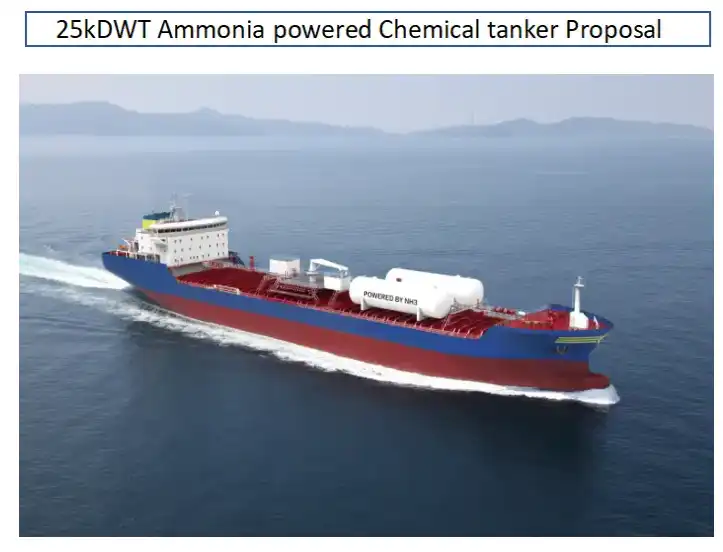Ammonia Combustion Feed System
Overview of the Ammonia Combustion Feed System
The Ammonia Combustion Feed System consists of several key components, including the filling and storage system, the Ammonia Fuel Supply System (AFSS), the Fuel Value Unit (FVU), the venting system, the Ammonia Release Management System (ARMS), the ventilation system, the inert gas system, the internal ammonia fuel system for the engine, and the safety system. It is important to note that there are considerable differences between the systems adopted by MAN and WinGD.

Why Choose Us?
1. Unrivaled Industry Knowledge – Backed by extensive experience in the design and construction of dual-fuel vessels, liquefied gas carriers, chemical tankers, and their related systems, our team continues to lead the industry.
2. Integrated Service Portfolio – Our offerings include end-to-end solutions for Methanol Fuel Supply Systems (MFSS), LNG Fuel Supply Systems (FGSS), Ammonia Fuel Supply Systems (AFSS), and LPG Cargo Handling Systems (CHS), all under one roof.
3. Proven Delivery Excellence – With 19 successful installations of clean fuel supply and cargo handling systems on record, we have earned a strong reputation for dependable performance and quality.
4. Advanced AFSS Development – Leveraging our solid foundation in ammonia carrier construction and LPG system retrofits, we independently develop ammonia fuel supply systems and actively participate in zero-carbon research initiatives.
5. End-to-End Lifecycle Service – From initial design to manufacturing and final installation, our team supports every stage of the project lifecycle—continuing through the construction of multiple units and robust post-sales service.
Product Specifications

Product Features
1. Safety and Efficiency – This Ammonia Combustion Feed System ensures safe and efficient bunkering and storage of ammonia, fully complying with regulations governing low-flashpoint fuels and specifically designed to meet IMO standards and industry requirements for ammonia as a marine fuel.
2. Flow Control and Safety Mechanisms – The system offers precise control over ammonia flow, thereby ensuring safe operation. Advanced safety features such as leak detection, emergency shutdown systems, and integration with inert gas systems are included.
3. Environmental Protection – Engineered to minimize environmental risks, this system captures and treats ammonia vapor. It incorporates thermal oxidation or re-liquefaction systems for safe ammonia handling, particularly within low-pressure storage tanks.
4. Ventilation and Risk Reduction – By ensuring proper ventilation above-deck and in enclosed spaces, the system integrates inert gas solutions to mitigate explosive risks in hazardous areas.
5. Pressure Control – To uphold safe pressure limits in low-pressure storage tanks, the system integrates re-liquefaction or sub-cooling units, along with thermal oxidation systems for effective management of ammonia vapor.

Installation Process
1. Confirm Vessel Design – Start by reviewing and confirming the vessel design drawings along with interface requirements for the system, ensuring that all technical clarifications are addressed during this phase.
2. Installation Preparation – Prepare all required tools, equipment, and safety measures ahead of time.
3. Component Transportation – Transport the prefabricated fuel supply system module to the installation site, utilizing appropriate lifting equipment to position it accurately in the designated area.
4. Module Securing – Secure the base of the module to the ship's structure, confirming its stability and correct alignment according to design specifications.
5. System Connections – Connect transfer pipelines, auxiliary system piping, and control cables, ensuring all seals and electrical systems function correctly.
6. System Debugging – Perform both individual and integrated debugging of the fuel supply system, verifying the operational performance of subsystems, including bunkering, supply, and safety control functions.
For more product information about Ammonia Combustion Feed System, please leave a message below.

